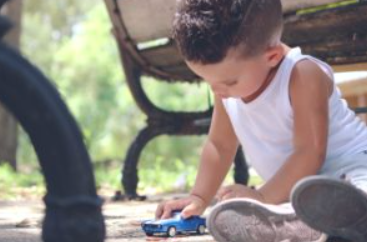It’s the middle of Florida’s ridiculously hot summer months, and there have been several national stories of children being forgotten in cars while the temperature climbs. According to CNN, more than 36 children die in hot cars each year — and July is usually the deadliest month.
While many people are misinformed or believe they would never forget their child in an automobile, KidsAndCars.org warns that the most dangerous mistake parents or caregivers can make is to think leaving a child alone in a vehicle could never happen to them or their family.
How does vehicular heatstroke occur

In a recent study, researchers found that temperatures could climb quickly to lethal levels in a variety of vehicles, whether they be in the sun or shade. The temperature of a car can climb 20 degrees in 10 minutes.
The humidity in a vehicle also rises as the child exhales. The increased humidity contributes to inefficiencies in sweating and therefore cooling the body. Because children have more surface area per pound of body weight compared to adults, their body temperatures rise three to five times faster than adults.
As the temperature in the vehicle increases, a child may experience fatigue or weakness or feel dizzy or faint. Heat exhaustion may be evident with profuse sweating, nausea, vomiting and irritability. Finally, with inadequate sweating and continued exposure to hot temperatures, heatstroke begins. The core body temperature will approach 105 degrees Fahrenheit, sweating ceases, and the skin becomes hot and dry. This stage creates a medical emergency and is life–threatening.
What contributes to vehicular heatstroke
Forgetting a child in a hot vehicle is often not a matter of negligence – it can be related to a memory problem. Research shows that “Forgotten Baby Syndrome” is a common memory failure that occurs because of the way the brain operates.
An article from Consumer Reports shares information from David Diamond, a leading expert in cognitive neuroscience. Diamond explains that the issue involves two parts of a person’s working memory: prospective and semantic. Prospective memory helps us remember to do something in the future, while semantic essentially allows us to operate out of habit. These two parts typically of the brain work together, but when there is a failure (such in times of stress, sleep deprivation or distraction) the result can be catastrophic.

There is also a higher risk of vehicular heatstroke for children in rear-facing seats because it is harder to notice whether a child is present from the front seat. Partly because of this, and because of their lack of ability to communicate, children age one year or younger are involved in more than half of vehicular heatstroke.
How to prevent child vehicular heatstroke

Authorities urge parents to “Look Before You Lock” to ensure that precious cargo has not been left in the back seat. Vigilance from the general public can also be life-saving. To reinforce this, several states, including Florida, have Good Samaritan laws that offer some legal protection to individuals who reasonably intervene when they see a child alone in a car and alert proper authorities.
Diamond advises the key to avoid memory lapses is to develop child-specific strategies to overcome them. Here are some examples:
- Put something you’ll need like your cell phone, handbag, employee ID or brief case, etc., in the back seat so that you have to open the back door to retrieve that item every time you park.
- Keep a large stuffed animal in the child’s car seat. When the child is placed in the car seat, move the stuffed animal in the front passenger seat, to create a prominent, visual reminder that the child is in the back seat.
- Make sure you have a strict policy in place with your childcare provider about daycare drop-off. Everyone involved in the care of your child should always be aware of their whereabouts. If your child will not be attending daycare as scheduled, it is the parent’s responsibility to call and inform the childcare provider. Conversely, if your child does not show up as scheduled, the childcare provider pledges to contact you immediately to confirm the safety of your child.
- Use technology. Set a calendar reminder on your phone to confirm you dropped your child off at daycare. Establish a system with a significant other or family member so you text them after completing the drop-off or they confirm with you that drop-off has occurred.
Technology advances, but education and awareness are still key
Proposed solutions are coming from a variety of sources. A sensor device has been developed by two fathers who want to end the tragic deaths. As technology evolves, some child-seat manufacturers are also working to incorporate child-detecting technologies into the car seat itself. Passenger-awareness was a huge focus of the Consumer Electronics Show earlier this year as well. Regardless of the potential future developments, it still important to be vigilant about the contributing factors and multiple fail-safes.